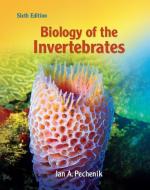|
This section contains 299 words (approx. 1 page at 300 words per page) |
Invertebrates are animals without backbones. This simple definition hides the tremendous diversity found within this group which includes protozoa (single-celled animals), corals, sponges, sea urchins, starfish, sand dollars, worms, snails, clams, spiders, crabs and insects. In fact, more than 98% of the nearly two million described species are invertebrates, ranging in size from less than a millimeter to several meters long. Invertebrates display a fascinating diversity of body forms, means of locomotion, and feeding habits.
Invertebrates are an essential part of every ecosystem on this planet. We could not function without them. They are responsible for the decomposition of organic waste, which allows the recycling of the chemicals in the ecosystem. Invertebrates also are involved with the pollination of plants, and are crucial as links in food chains where herbivores convert the energy in plants into energy that is available to animals higher up the food web.
Most invertebrates live in water or have some stage of their life in water because the carditrais are relatively stable in water, especially sea water. The external layers of aquatic invertebrates are generally thin and are permeable to water, allowing the exchange of gas, although some have specialized respiratory structures on their body surface. Aquatic invertebrates feed by ingesting directly, by filter feeding, or actively capturing prey.
Some groups of invertebrates such as earthworms, insects and spiders live on land. These invertebrates need to have special structures to deal with life on land. For example, because air is less buoyant than water, earthworms have strong muscles for crawling and burrowing while insects and spiders move by means several pairs of legs. Drying out on land is a problem so earthworms must secrete mucous to keep their bodies moist, while insects and spiders are waterproof and are physiologically adapted to conserve water.
|
This section contains 299 words (approx. 1 page at 300 words per page) |


